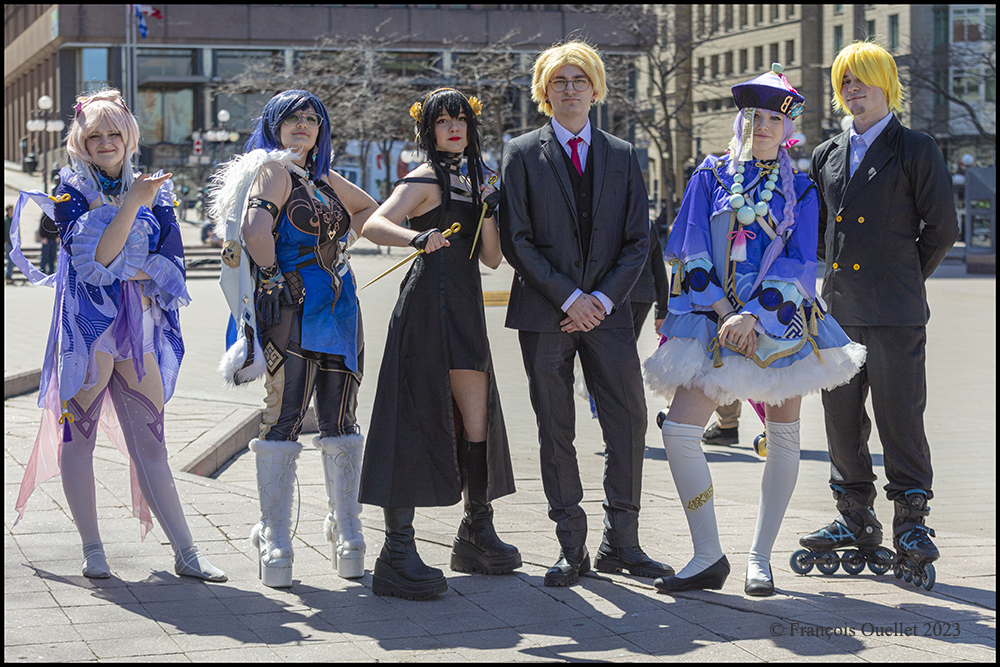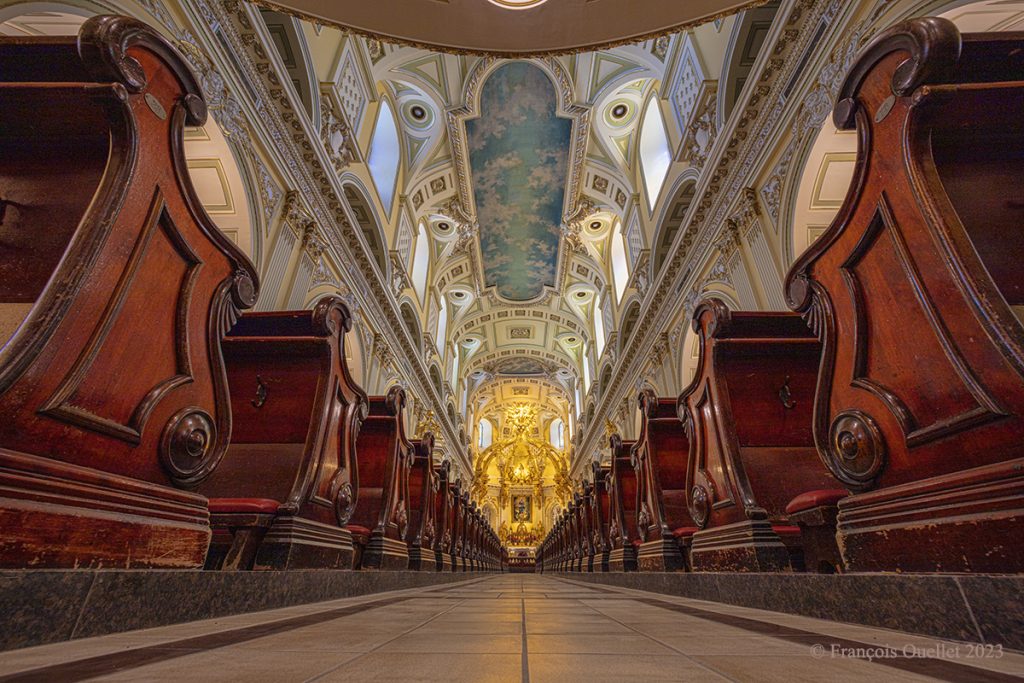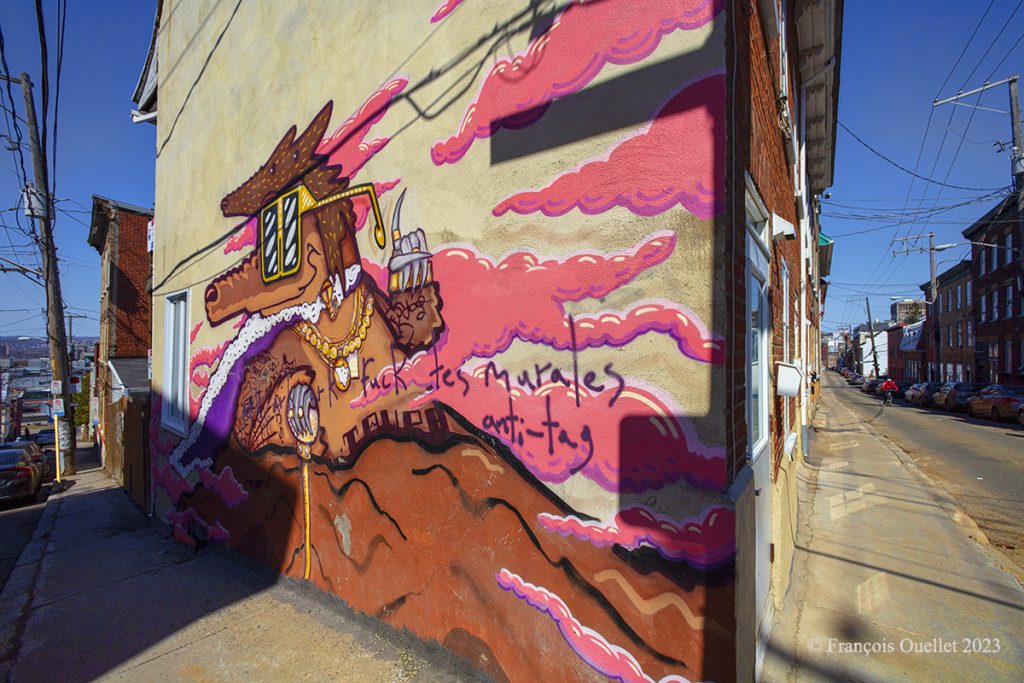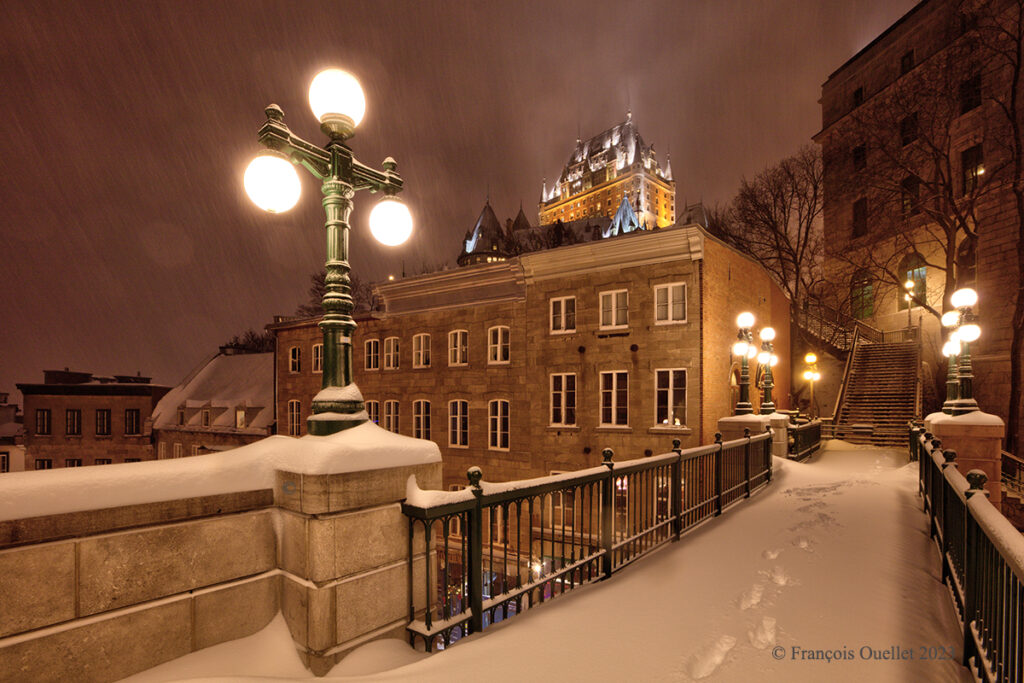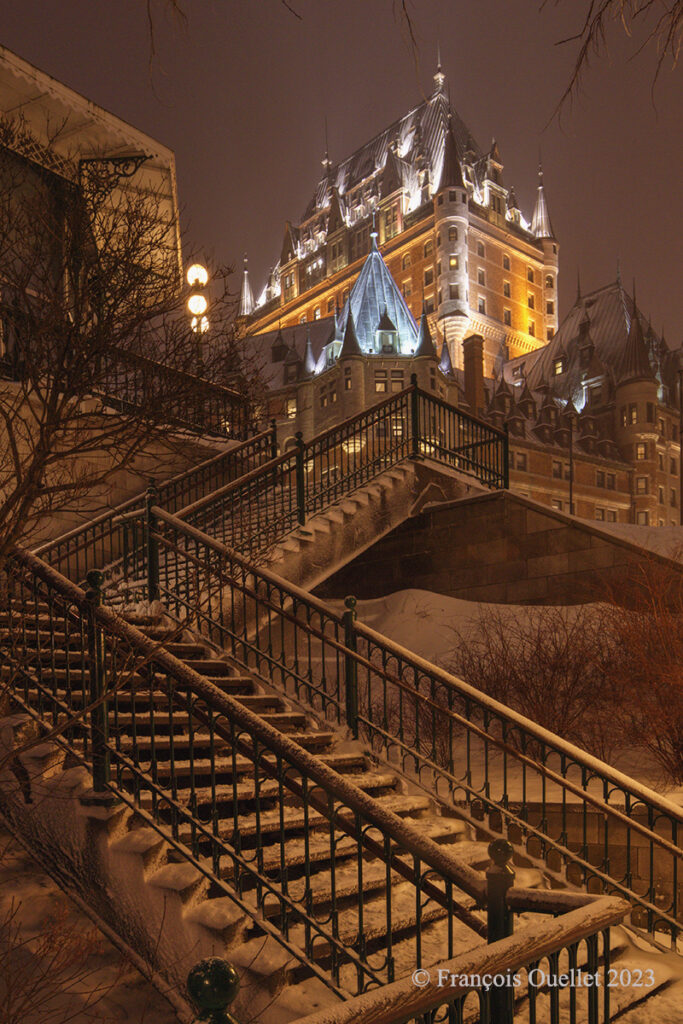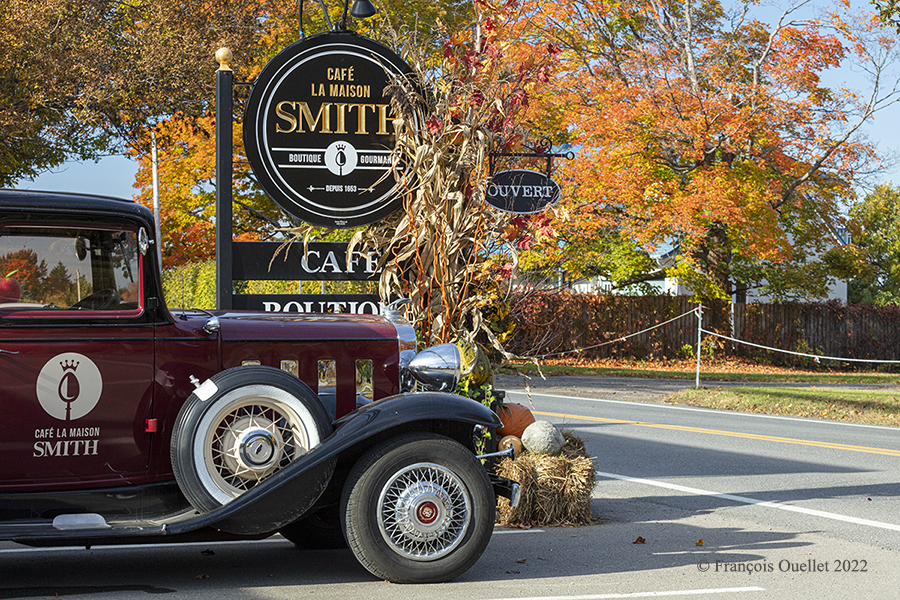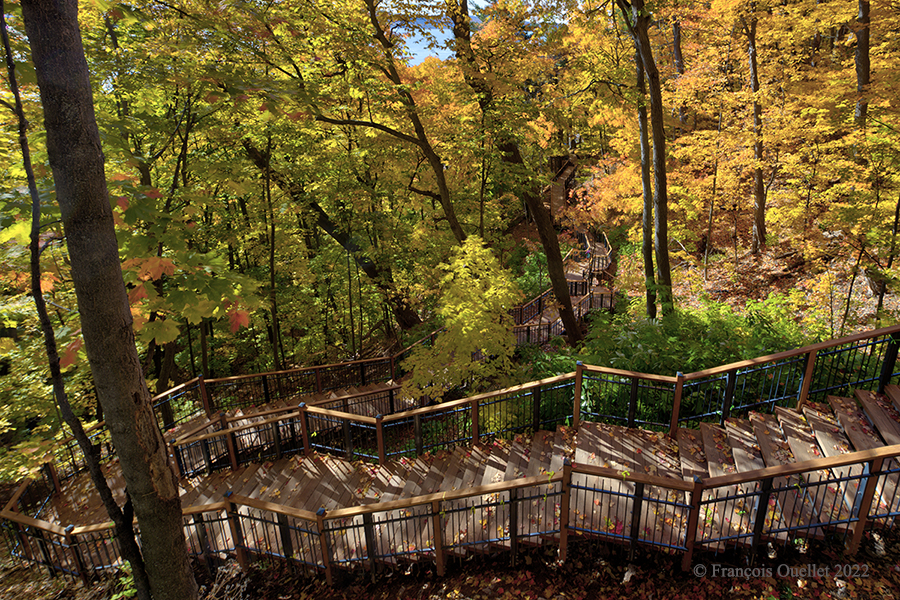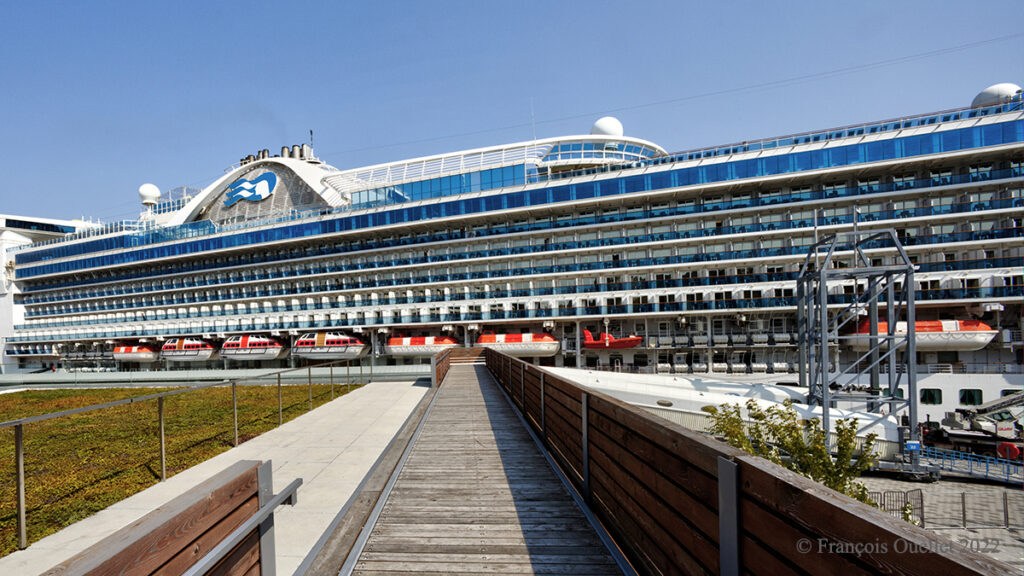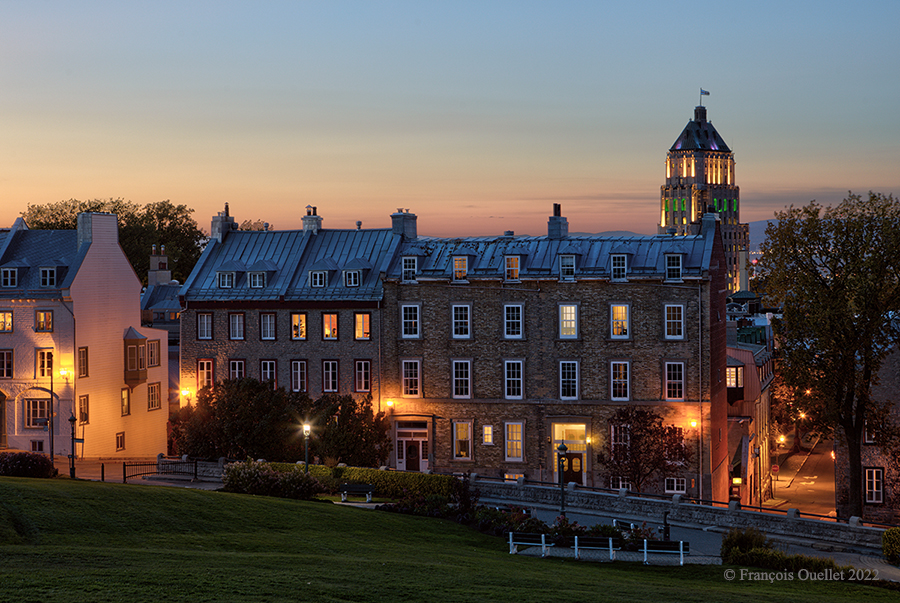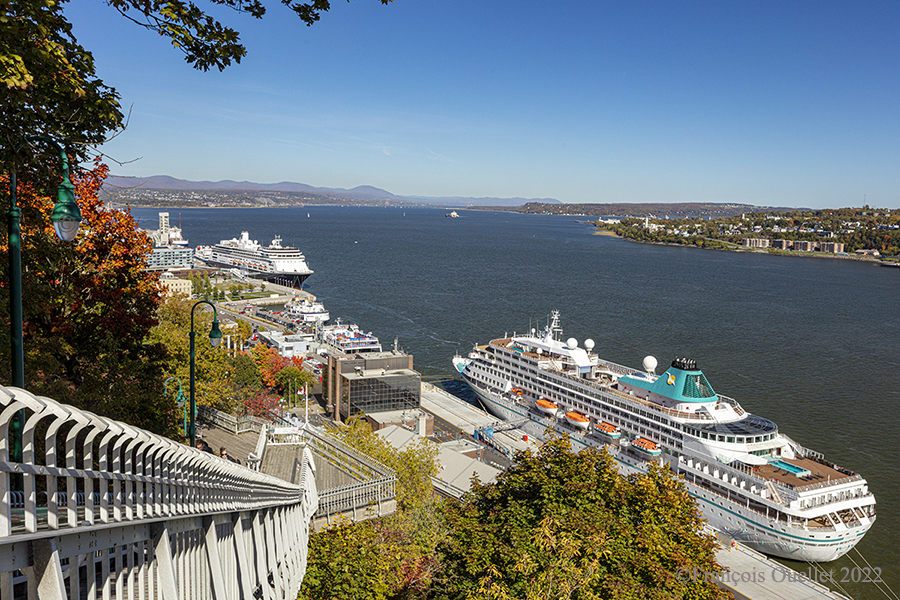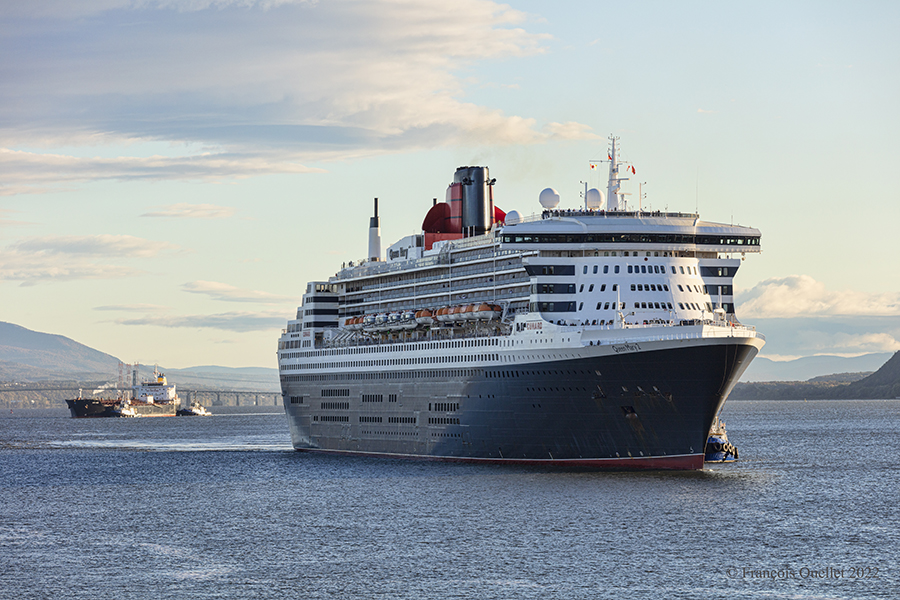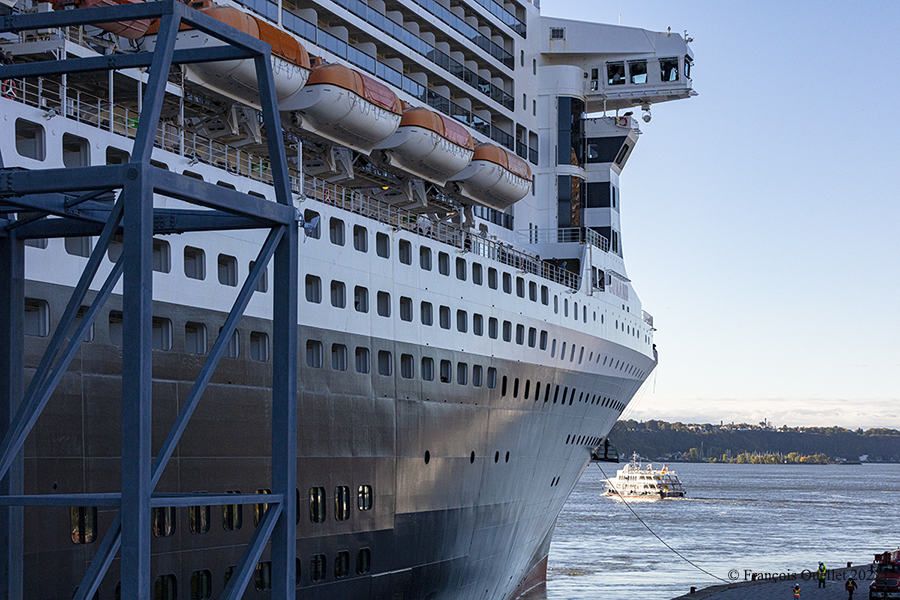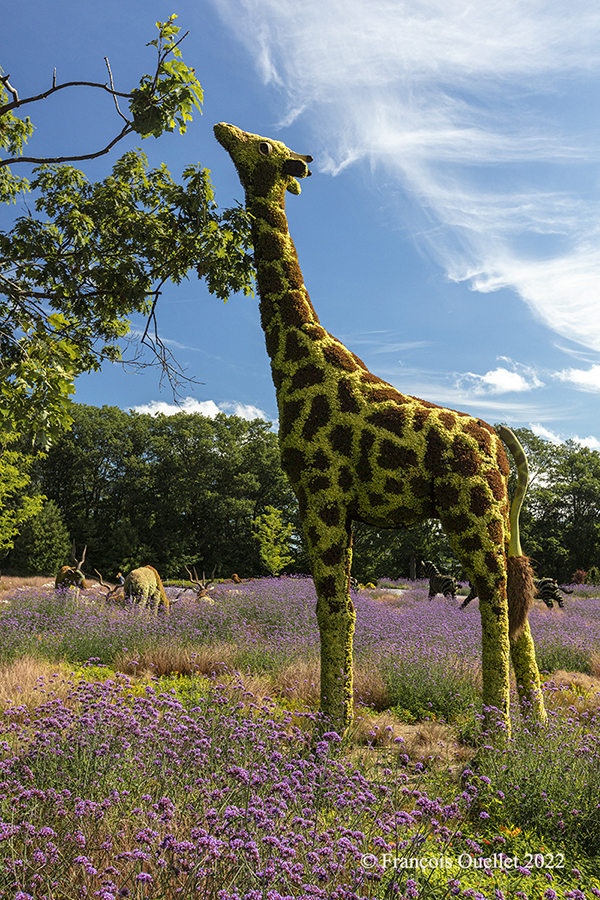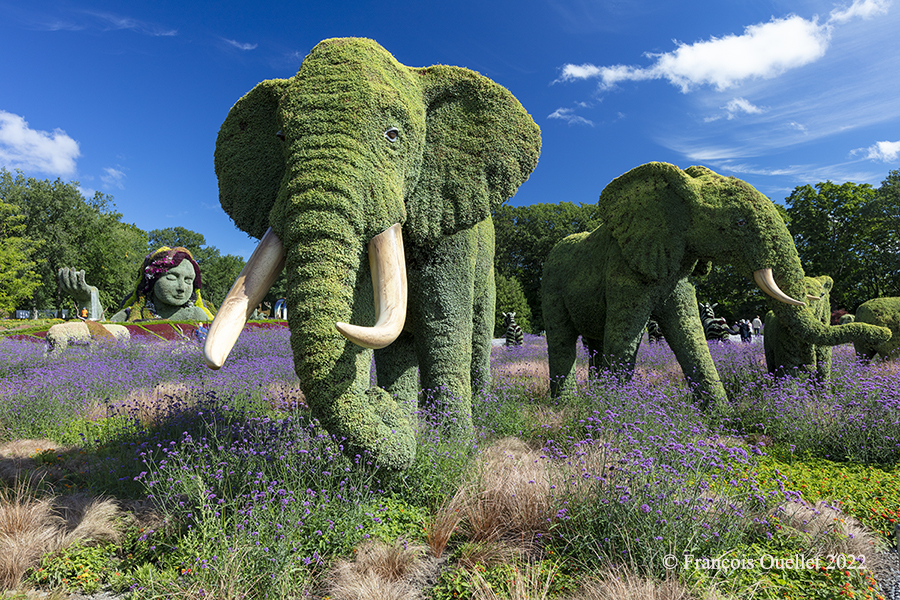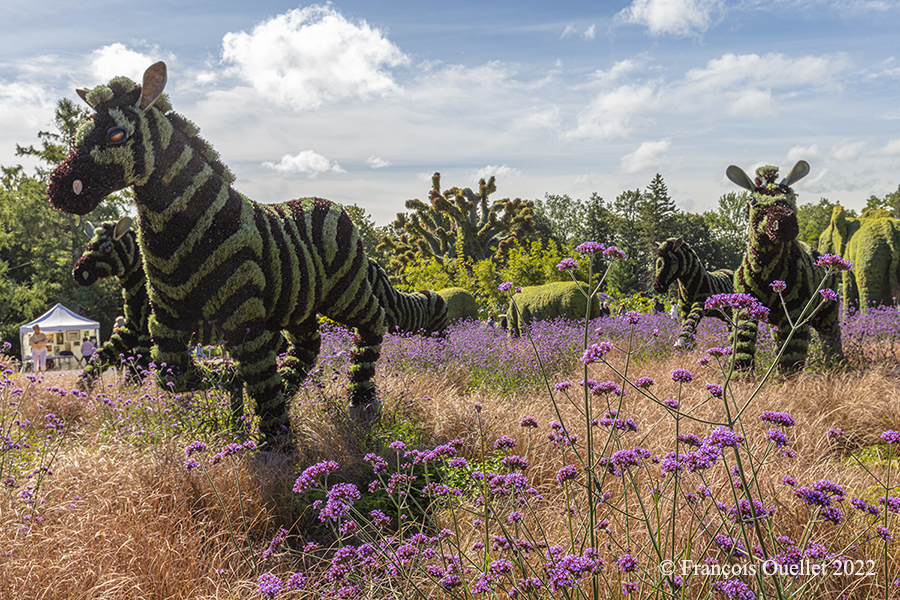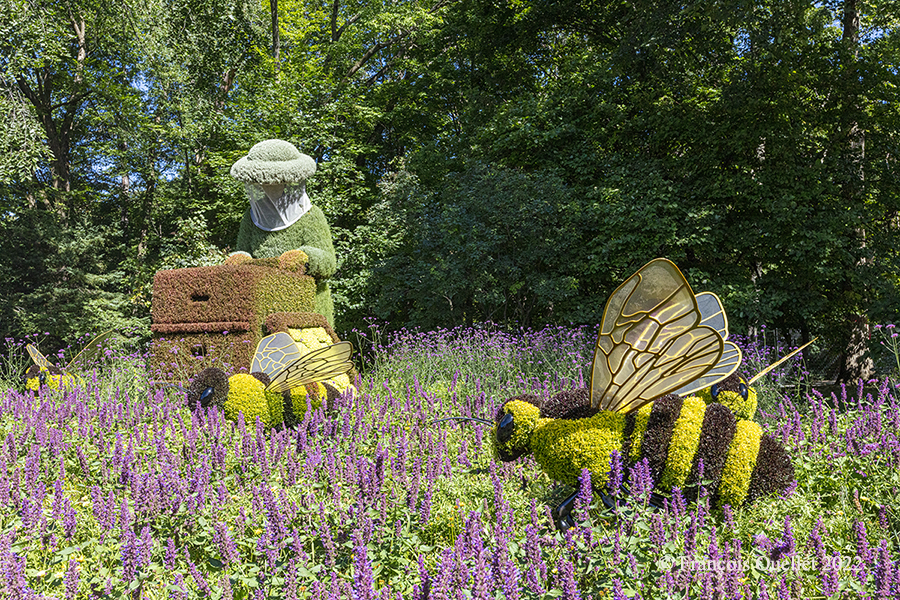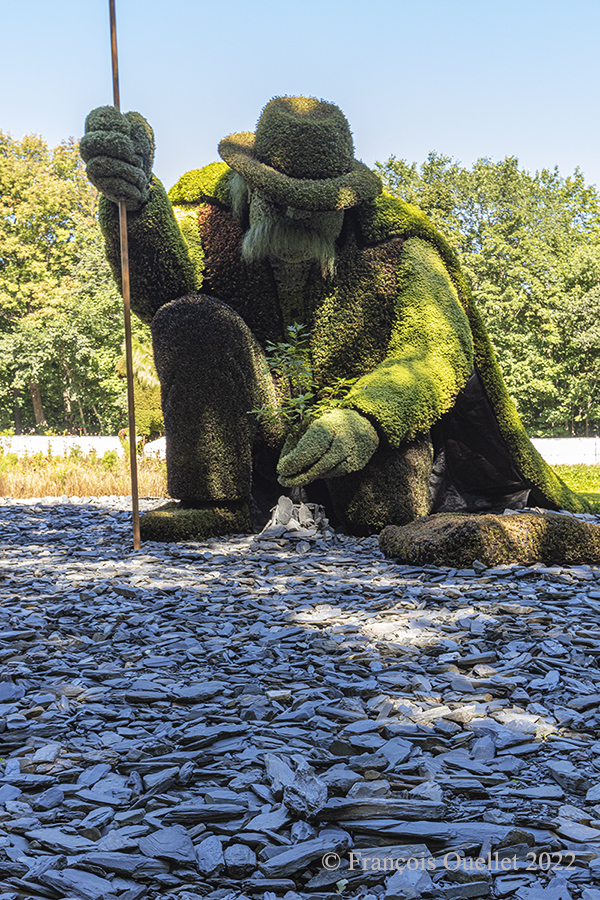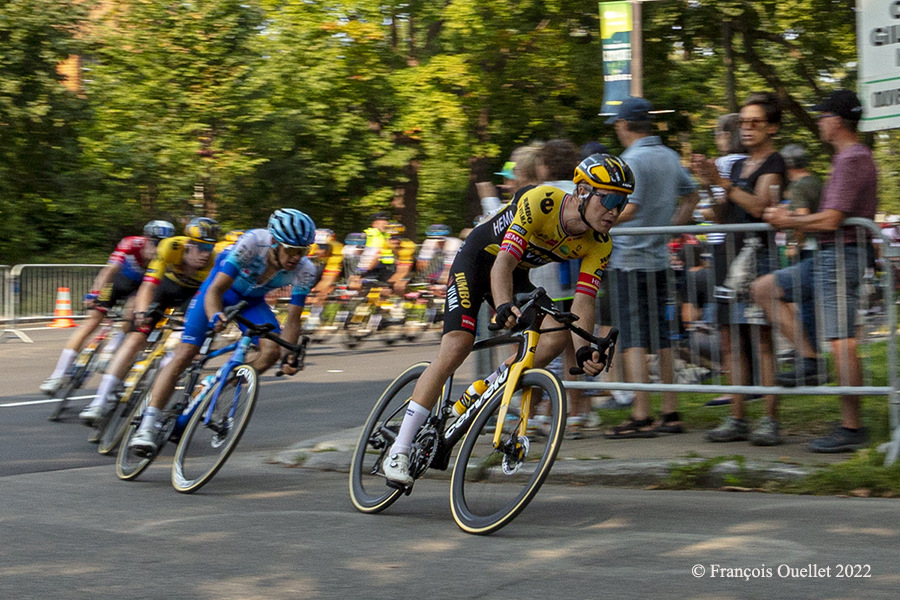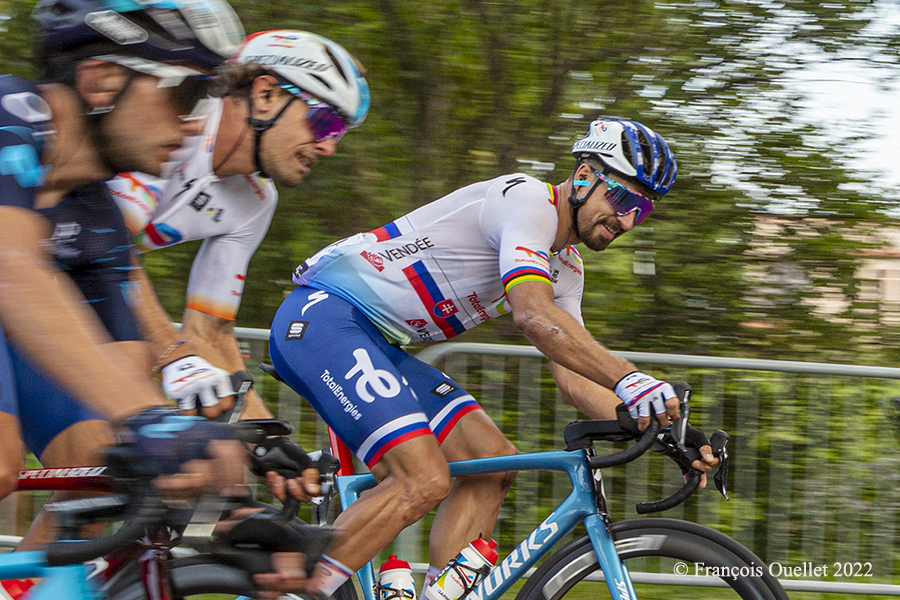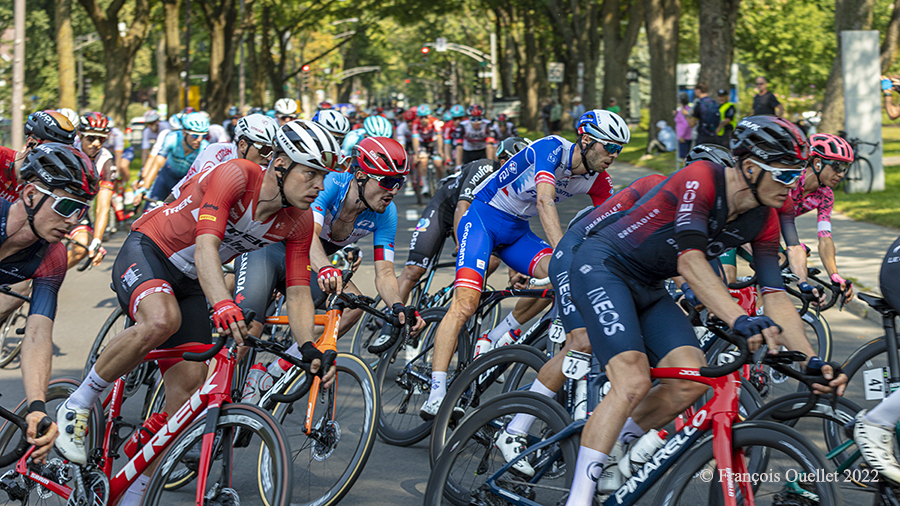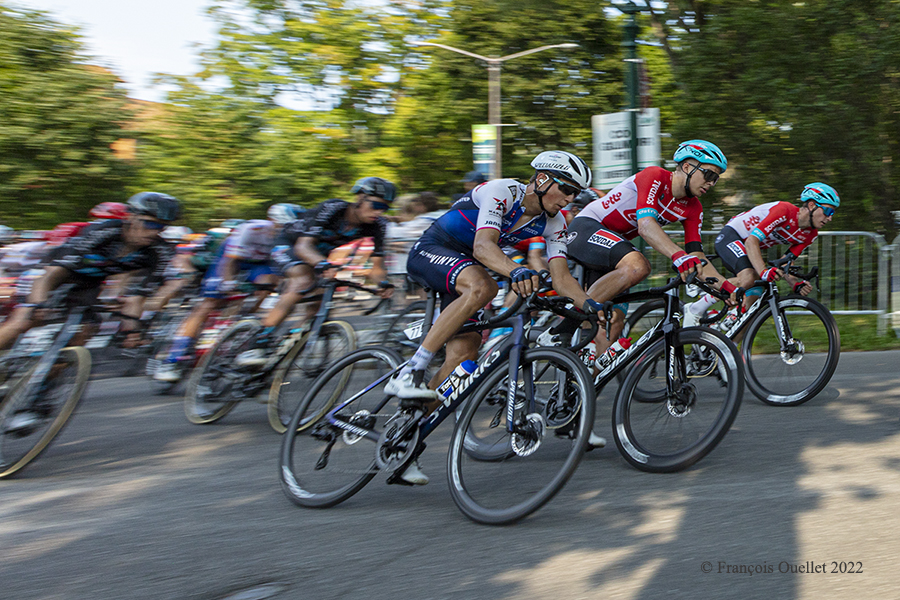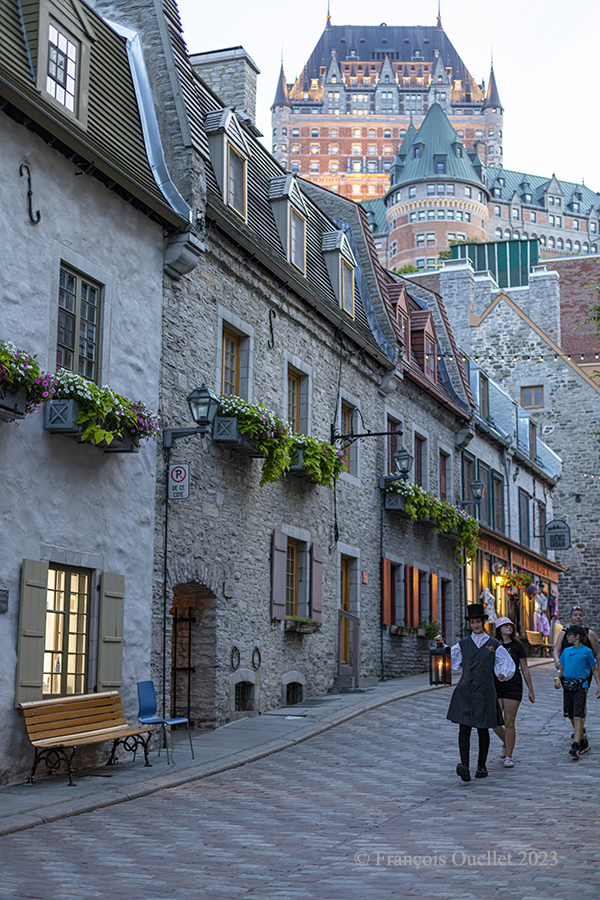
Some companies organize themed guided tours of Old Quebec at dusk in summer. The guides dress up in costume and regularly follow the same routes. With a little patience, a lantern-wielding person can be included in a photo, as well as the old stone houses and the Château Frontenac. This adds another interesting detail to the scene.
The picture above presented several challenges, some of which have been solved. Ideally, the HDR method would have provided a better control of luminosity, but the hostess holding the lantern would have disappeared in the process carried out by the Photomatix software. This person played an important role in the scene, so I decided to take just one shot, but in RAW format to optimize the sky light correction in post-processing.
I wanted to use the smallest aperture possible to get a precise focus from the foreground to the Château Frontenac. But due to the lack of adequate light and the movement of people towards the camera, I had to maintain a sufficient shutter speed, even at ISO 6400. Unfortunately, the aperture suffered a little.
So, this is a photo full of compromises, where you do the best you can with the situation and the photographic equipment available.
Click on the link for more Summer photos of Quebec City and Île d’Orléans on my blog.
